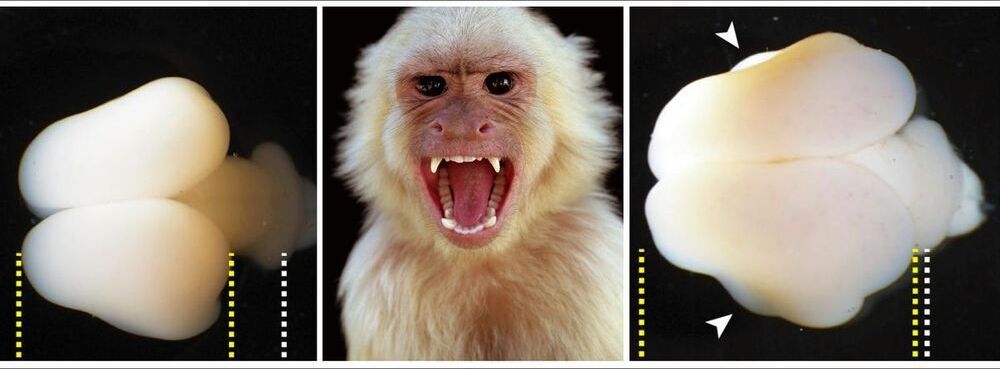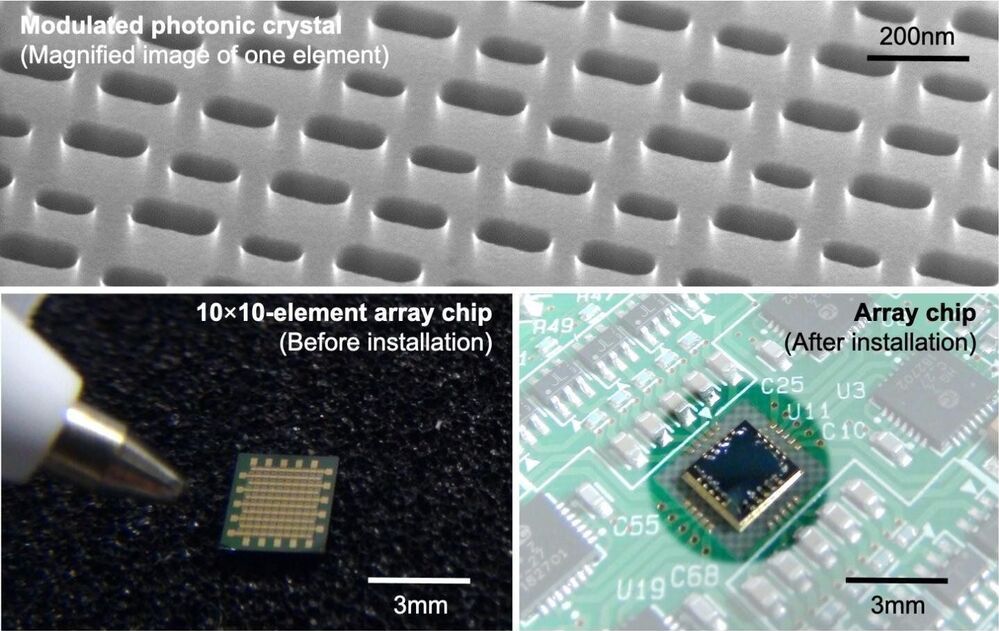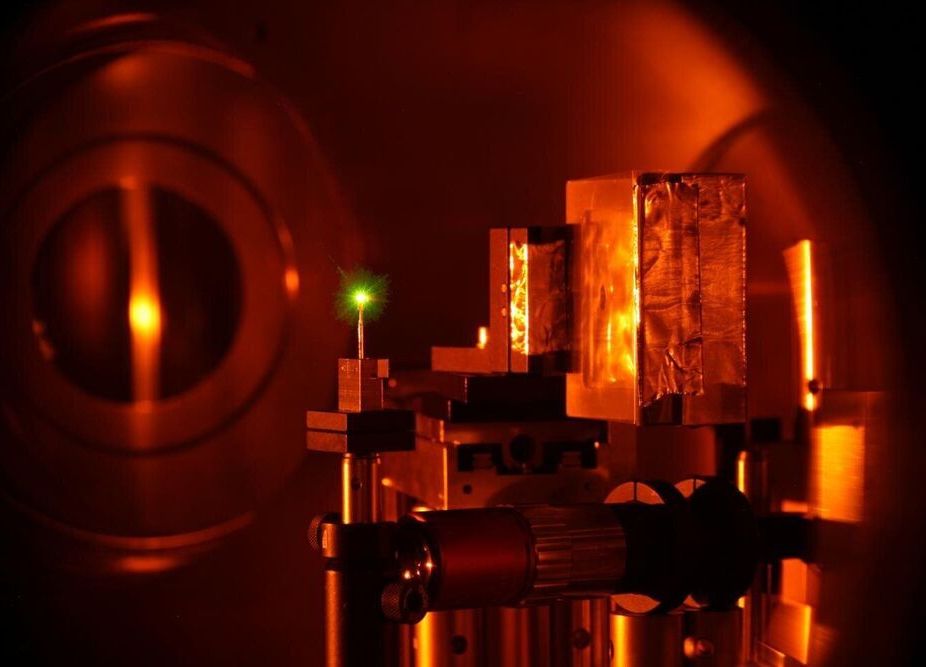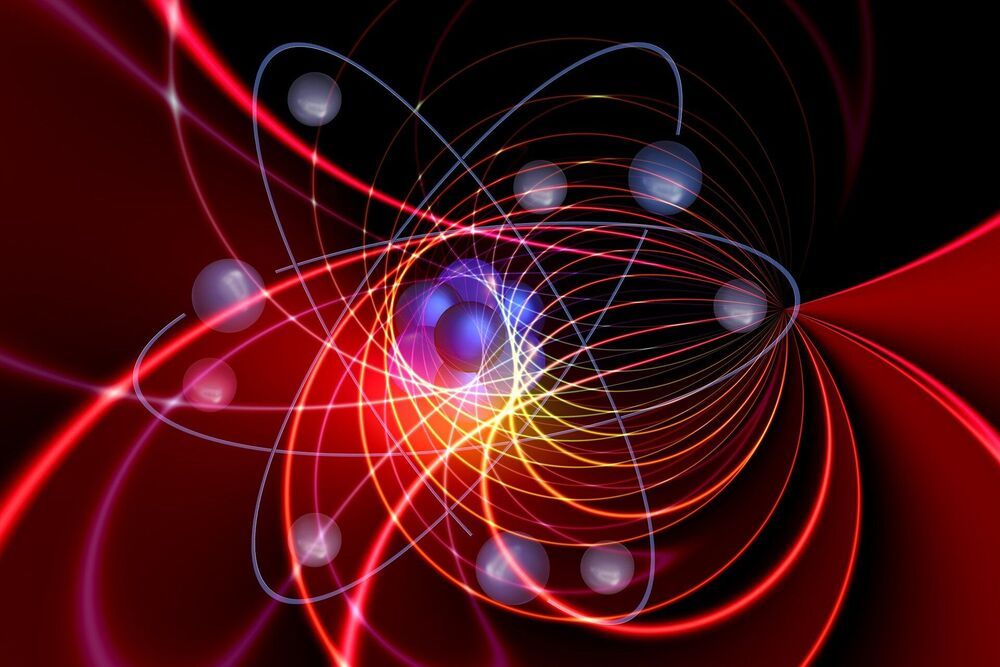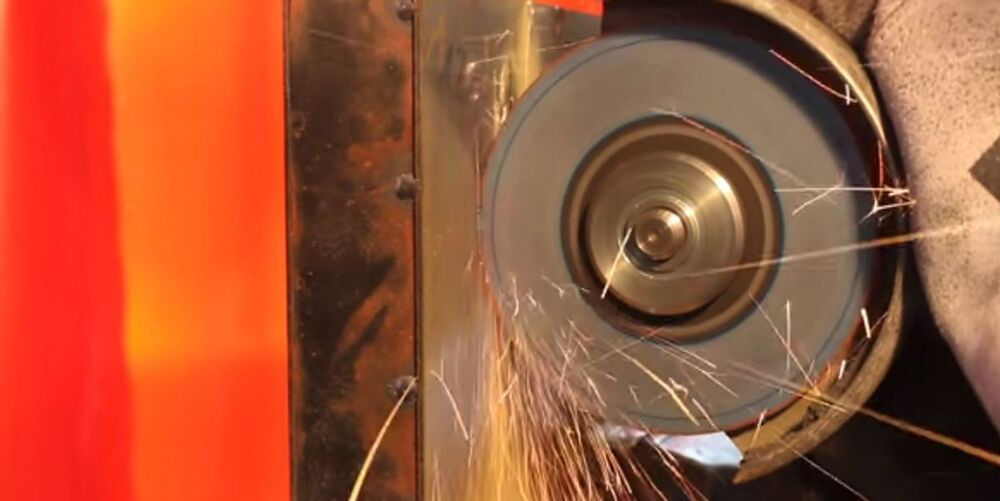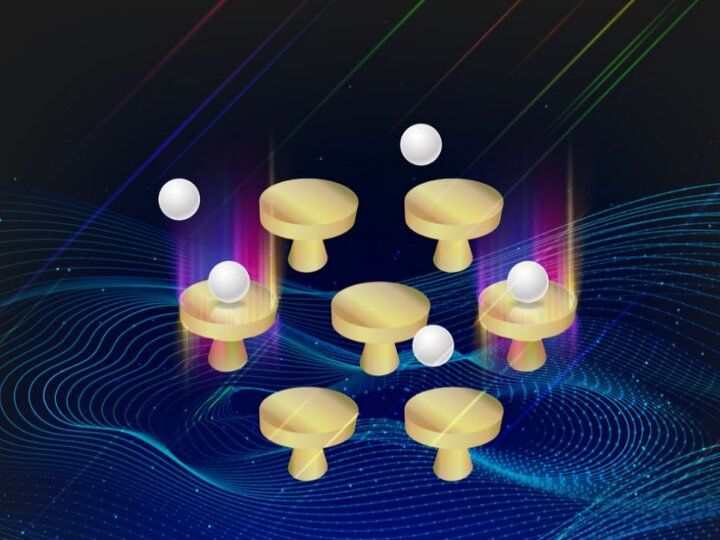Page 5899
Nov 17, 2020
Uh-Oh, Scientists Used Human Genes to Make Monkey Brains Bigger
Posted by Heather Blevins in category: neuroscience
I did the worm thing so I might as well bring up the monkey thing.
In an experiment that could portend a real-life Planet of the Apes situation, scientists spliced human genes into the fetus of a monkey to substantially increase the size of the primate’s brain. And it worked.
Dive deeper. ➡ Get unlimited access to the weird world of Pop Mech.
Continue reading “Uh-Oh, Scientists Used Human Genes to Make Monkey Brains Bigger” »
Nov 17, 2020
Researchers describe a new beam scanning device utilizing ‘photonic crystals
Posted by Saúl Morales Rodriguéz in categories: food, mobile phones, robotics/AI
Scanning lasers—from barcode scanners at the supermarket to cameras on newer smartphones—are an indispensable part of our daily lives, relying on lasers and detectors for pinpoint precision.
Distance and object recognition using LiDAR—a portmanteau of light and radar—is becoming increasingly common: reflected laser beams record the surrounding environment, providing crucial data for autonomous cars, agricultural machines, and factory robots.
Current technology bounces the laser beams off of moving mirrors, a mechanical method that results in slower scanning speeds and inaccuracies, not to mention the large physical size and complexity of devices housing a laser and mirrors.
Nov 17, 2020
Understanding astrophysics with laser-accelerated protons
Posted by Saúl Morales Rodriguéz in categories: materials, physics
Bringing huge amounts of protons up to speed in the shortest distance in fractions of a second—that’s what laser acceleration technology, greatly improved in recent years, can do. An international research team from the GSI Helmholtzzentrum für Schwerionenforschung and the Helmholtz Institute Jena, a branch of GSI, in collaboration with the Lawrence Livermore National Laboratory, U.S., has succeeded in using protons accelerated with the GSI high-power laser PHELIX to split other nuclei and to analyze them. The results have now been published in the journal Nature Scientific Reports and could provide new insights into astrophysical processes.
For less than one picosecond (one trillionth of a second), the PHELIX laser shines its extremely intense light pulse onto a very thin gold foil. This is enough to eject about one trillion hydrogen nuclei (protons), which are only slightly attached to the gold, from the back-surface of the foil, and accelerate them to high energies. “Such a large number of protons in such a short period of time cannot be achieved with standard acceleration techniques,” explains Pascal Boller, who is researching laser acceleration in the GSI research department Plasma Physics/PHELIX as part of his graduate studies. “With this technology, completely new research areas can be opened that were previously inaccessible.”
These include the generation of nuclear fission reactions. For this purpose, the researchers let the freshly generated fast protons impinge on uranium material samples. Uranium was chosen as a case study material because of its large reaction cross-section and the availability of published data for benchmarking purposes. The samples have to be close to the proton production to guarantee a maximum yield of reactions. The protons generated by the PHELIX laser are fast enough to induce the fission of uranium nuclei into smaller fission products, which remain then to be identified and measured. However, the laser impact has unwanted side effects: It generates a strong electromagnetic pulse and a gammy-ray flash that interfere with the sensitive measuring instruments used for this detection.
Nov 17, 2020
Novel analytic approach enhances nuclear magnetic resonance signal detection in previously ‘invisible’ regions
Posted by Saúl Morales Rodriguéz in categories: biotech/medical, chemistry, nuclear energy
First introduced into wide use in the middle of the 20th century, nuclear magnetic resonance (NMR) has since become an indispensable technique for examining materials down to their atoms, revealing molecular structure and other details without interfering with the material itself.
“It’s a broadly used technique in chemical analysis, materials characterization, MRI—situations in which you do a non-invasive analysis, but with atomic and molecular details,” said UC Santa Barbara chemistry professor Songi Han. By placing a sample in a strong magnetic field and then probing it with radio waves scientists can determine from the response from the oscillating nuclei in the material’s atoms the molecular structure of the material.
“However, the problem with NMR has been that because it’s such a low-energy technique, it’s not very sensitive,” Han said. “It’s very detailed, but you don’t get much signal.” As a result, large amounts of sample material may be needed relative to other techniques, and the signals’ general weakness makes NMR less than ideal for studying complex chemical processes.
Nov 16, 2020
Scientists create ‘non-cuttable’ material 85% less dense than steel
Posted by Raphael Ramos in category: materials
Once again, humans are taking inspiration from nature. The metal is based on Arapaima fish scales that are known to stop Piranha bites. Pretty cool!
Even a waterjet cutter couldn’t get through during testing.
I bet a knight would want his suit based on this! 😃
Continue reading “Scientists create ‘non-cuttable’ material 85% less dense than steel” »
Nov 16, 2020
CERN Physicists Find First Evidence for Production of Top Quarks in Nucleus-Nucleus Collisions
Posted by Genevieve Klien in categories: cosmology, particle physics
New results from the CMS Collaboration at CERN’s Large Hadron Collider demonstrate for the first time that top quarks are produced in nucleus-nucleus collisions. The results open the path to study in a new and unique way the extreme state of matter that is thought to have existed shortly after the Big Bang.
First observed in proton-antiproton collisions at the Tevatron collider 25 years ago, this particle is also a unique and potentially very powerful tool to understand the inner content of nuclear matter.
Nov 16, 2020
Green Hydrogen Is Sparking a Revolution in Sustainable Energy
Posted by Raphael Ramos in categories: energy, sustainability
It seems the rise of hydrogen as the clean fuel for the future is coming closer to reality.
A viable substitute for fossil fuels, hydrogen has been struggling to gain traction for years — but thanks to Europe, that could soon change.
Nov 16, 2020
New technology allows more precise view of the smallest nanoparticles
Posted by Saúl Morales Rodriguéz in categories: biotech/medical, nanotechnology
Current state-of-the-art techniques have clear limitations when it comes to imaging the smallest nanoparticles, making it difficult for researchers to study viruses and other structures at the molecular level.
Scientists from the University of Houston and the University of Texas M.D. Anderson Cancer Center have reported in Nature Communications a new optical imaging technology for nanoscale objects, relying upon unscattered light to detect nanoparticles as small as 25 nanometers in diameter. The technology, known as PANORAMA, uses a glass slide covered with gold nanodiscs, allowing scientists to monitor changes in the transmission of light and determine the target’s characteristics.
PANORAMA takes its name from Plasmonic Nano-aperture Label-free Imaging (PlAsmonic NanO-apeRture lAbel-free iMAging), signifying the key characteristics of the technology. PANORAMA can be used to detect, count and determine the size of individual dielectric nanoparticles.
Nov 16, 2020
China’s silicon rush: A reality check
Posted by Derick Lee in categories: chemistry, computing
China faces an additional geopolitical challenge in chip fabrication and assembly. Just a handful of Japanese companies dominate the global market in silicon wafers, photoresists, and essential packaging chemicals. These companies are well-regarded for their high-quality production capabilities and their products are not easily replaceable even by a manufacturing heavyweight such as China. In a changing world where strategic concerns are guiding technology flows, China’s chip ambitions can be foiled not just by the US but also by Japan and Taiwan.
China’s state-backed funds may well spur private investment, even producing a few champions, but are unlikely to result in a self-sufficient Chinese chip industry any time soon.

